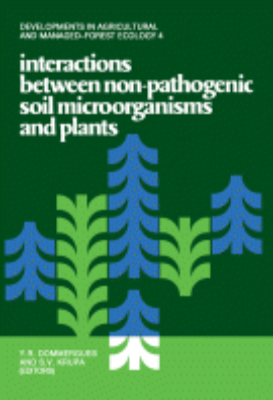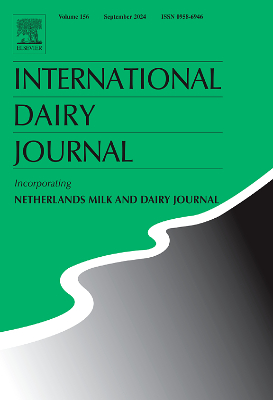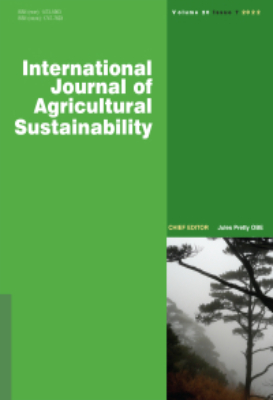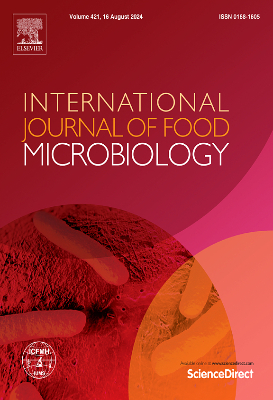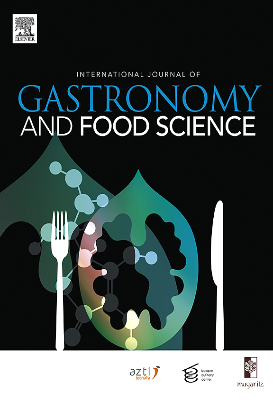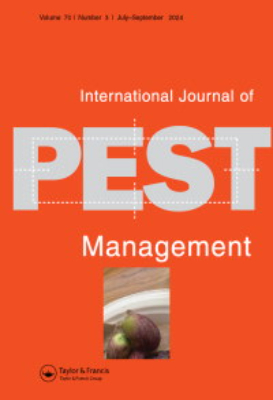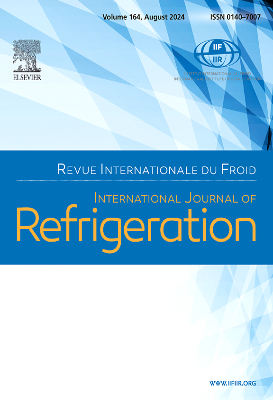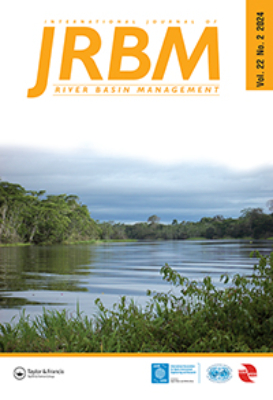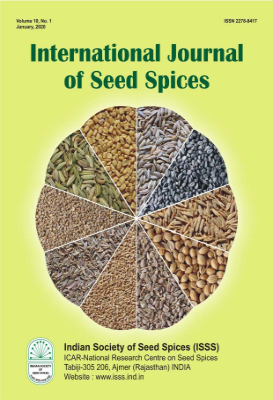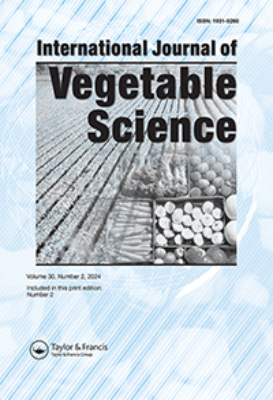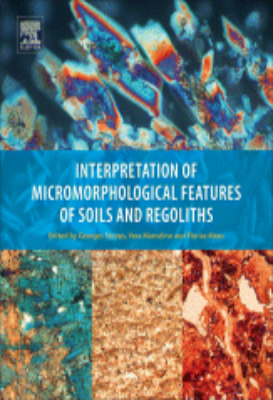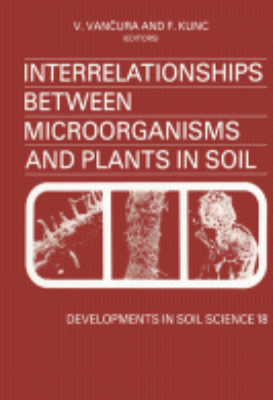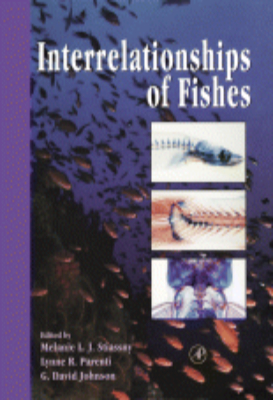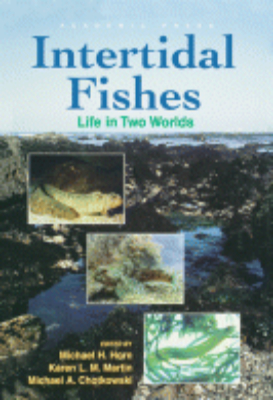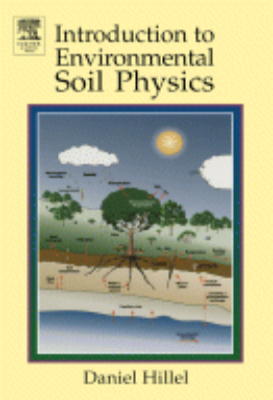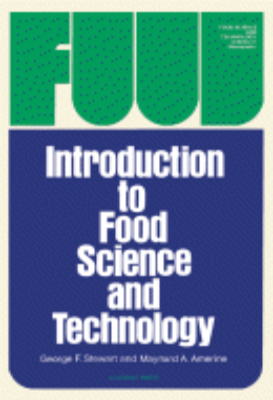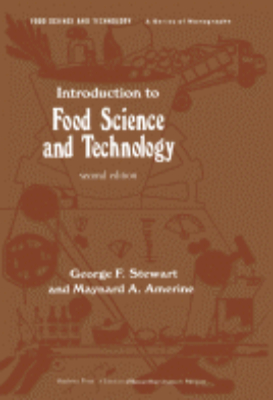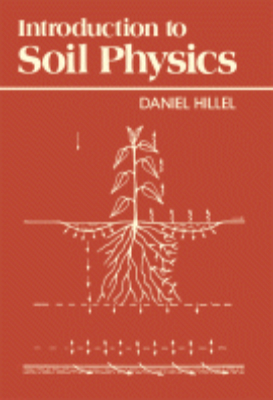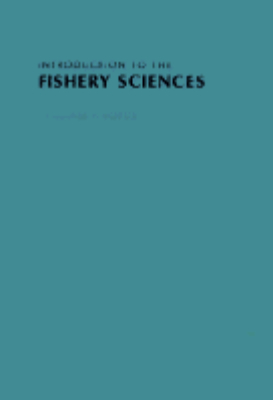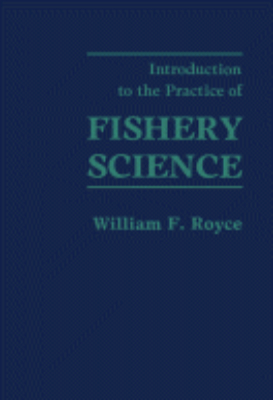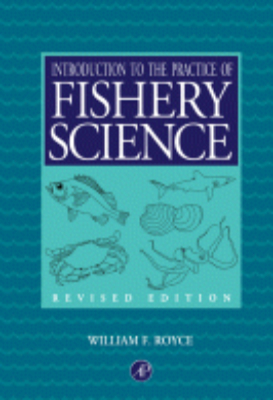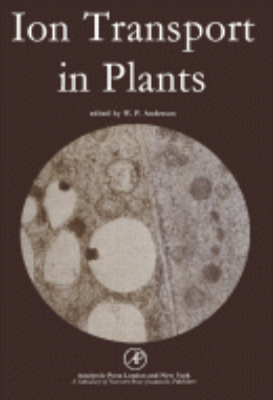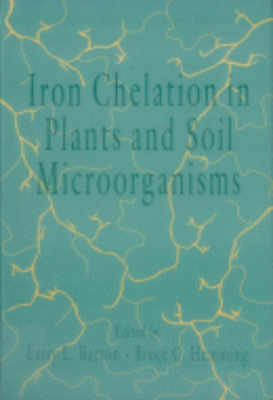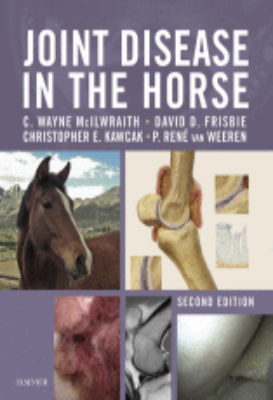Agricultural Science
International Journal of Seed Spices
The International Journal of Seed Spices is published by the Indian Society for Seed Spices half yearly basis with the aim to provide an appropriate platform presenting well considered, meaningful, constructively thought provoking, non-political and non-controversial but critically analyzing and synthesizing present and future aspects of research on seed Spices and related commodity reference to our country and rest world. The contributors are expected to highlight various issues of irrigation, management, soil, agronomic practices, precision agriculture, breeding, post harvest, IPM, climate change along with meaningful suggestions for solution, refinement and innovations.
Interpretation of Micromorphological Features of Soils and Regoliths
Interpretation of Micromorphological Features of Soils and Regolith, 2nd edition, provides researchers and students with a global tool for interpretation of micromorphological features of regoliths and soils. After an introduction and general overview by the editors, micromorphological aspects of regoliths (e.g. saprolites, unconsolidated sediments, transported materials) are highlighted, followed by a systematic and coherent discussion of the micromorphological expression of various pedogenic processes. This is done by discussing diagnostic horizons, materials and processes. The following topics are also treated: freeze-thaw features, redoximorphic features, calcareous and gypsiferous formations, textural features, spodic and oxic horizons, andic and volcanic materials, organic and surface horizons, laterites, surface crusts, salts, biogenic and inorganic siliceous materials, authigenic silicates, phosphates, thionic and derived materials, and features related to faunal activity. The last chapters address the impact of anthropic activities, with regard to archaeology and palaeopedology. Interpretation of Micromorphological Features of Soils and Regolith, 2nd edition, is written by a team of well-known, global experts in the field who all used a single set of concepts and terminology, making it a valuable interdisciplinary reference.
Interrelationships of Fishes
"Comprising by far the largest and most diverse group of vertebrates, fishes occupy a broad swathe of habitats ranging from the deepest ocean abyss to the highest mountain lakes. Such incredible ecological diversity and the resultant variety in lifestyle, anatomy, physiology and behavior, make unraveling the evolutionary history of fishes a daunting task. The successor of a classic volume by the same title, Interrelationships of Fishes, provides the latest in the ""state of the art"" of systematics and classification for many of the major groups of fishes. In providing a sound phylogenetic framework from leading authorities in the field, this book is an indispensable reference for a broad range of biologists, especially students of fish behavior, anatomy, physiology, molecular biology, genetics and ecology--in fact, anyone who wishes to interpret their work on fishes in an evolutionary context. Key Features. Provides thorough and comprehensive treatment of the Phylogency of fishes. Assembles an International team of expert contributors. Useful to a wide variety of fish biologists"
Intertidal Fishes
"Intertidal Fishes describes the fishes inhabiting the narrow strip of habitat between the high and low tide marks along the rocky coastlines of the world. It analyzes the specialized traits of these fishes that have adapted to living in the dynamic and challenging space where they are alternately exposed to the air and submerged in water with the ebb and flow of the tides. This book provides a comprehensive account of fishes largely overlooked in many previous studies of intertidal organisms and emphasizes how they differ from fishes living in other deeper-water habitats. Coverage includes air breathing, movements and homing, sensory systems, spawning and parental care, feeding habits, community structure, systematic relationships, distribution patterns, and the fossil record in the intertidal zone. Key Features. Written by an international team of 21 experts on intertidal fish biology. Worldwide coverage of intertidal fishes. Comprehensive phylogenetic listing of all fish families with intertidal members. Global biogeographic analysis involving over 700 species from 86 sites. Outlines field and laboratory methods pertinent to studying intertidal fishes. Thorough ecological coverage with chapters on vertical distribution, movements and homing, reproduction, feeding, and community structure. Covers the physiology of aerial and aquatic respiration, osmoregulation, and sensory systems"
Introduction to Environmental Soil Physics
An abridged, student-oriented edition of Hillel's earlier published Environmental Soil Physics, Introduction to Environmental Soil Physics is a more succinct elucidation of the physical principles and processes governing the behavior of soil and the vital role it plays in both natural and managed ecosystems. The textbook is self-contained and self-explanatory, with numerous illustrations and sample problems. Based on sound fundamental theory, the textbook leads to a practical consideration of soil as a living system in nature and illustrates the influences of human activity upon soil structure and function. Students, as well as other readers, will better understand the importance of soils and the pivotal possition they occupy with respect to careful and knowledgeable conservation.
Introduction to Food Science and Technology: 1973
Introduction to Food Science and Technology focuses on the importance of food science and food technology to humans. This book discusses the total sequence of operations in food technology, which includes the selection of raw materials, processing, preservation, and distribution. Comprised of nine chapters, this monograph starts with an overview of the processing and storage of food. This book examines how the food processor often controls the producers operations by demanding a raw product of a certain type in order to satisfy a particular processing and consumer demand. Other chapters consider the primary concern of food scientists and technologists in the processing and preservation of raw agricultural products as nutritious and stable foods of acceptable quality. The final chapter deals with the variety of jobs available for those trained in the biological, physical, and behavioral sciences and their applications to food processing and food preservation. Food technologists, chemists, and scientists will find this book extremely useful.
Introduction to Food Science and Technology: 1982 Second Edition
The Second Edition of this popular textbook has benefited from several years of exposure to both teachers and students. Based on their own experiences as well as those of others, the authors have reorganized, added, and updated this work to meet the needs of the current curriculum. As with the first edition the goal is to introduce the beginning student to the field of food science and technology. Thus, the book discusses briefly the complex of basic sciences fundamental to food processing and preservation as well as the application of these sciences to the technology of providing the consumer with food products that are at once appealing to the eye, pleasing to the palate, and nutritious to the human organism. Introduction to Food Science and Technology is set in the world in which it operates; it contains discussions of historical development, the current world food situation, the safety regulations and laws that circumscribe the field, and the careers that it offers.
Introduction to Forest and Shade Tree Insects
This comprehenisive text approaches the subject from an ecological/evolutionary biological perspective. The assumption is that one cannot study forest insects without understanding the dynamics of the relationship between an insect and its host plant. This relationship includes knowing what factors control forest insect populations such as food, food quality, tree vigor, host selection, and symbiotic relationships. The authors also discuss tree-injuring insects from the perspective of their influence on tree physiology and growth as well as economic and commercial effects. The book represents a "modern" approach to the topic of forest and shade tree insects; is well-illustrated; and includes a comprehensive primary reference list.
Introduction to Laboratory Animal Science and Technology
Introduction to Laboratory Animal Science and Technology discusses the principles involved in the healthy maintenance of animals in the laboratory or animal house. This book is divided into eight six units of study of the physical requirements of animals, physiological data, and techniques of husbandry, followed by summary data capsules and recommended further reading. After an overview of the laboratory animals, this book goes on dealing with various aspects of animal care, including their accommodation, health care routine, and animal health and hygiene. The next chapters examine the components of animal diet, the biological aspects of animal reproduction, breeding and heredity. The final chapter emphasizes the legal requirements concerning anesthesia, laboratory procedures, and the issue of euthanasia. This book will prove useful to laboratory technicians, students, students, researchers, and the general public who are concerned for animals and their use in laboratory work.
Introduction to Soil Physics
This book is a unified, condensed, and simplified version of the recently issued twin volumes, Fundamentals of Soil Physics and Applications of Soil Physics. Nonessential topics and complexities have been deleted, and little prior knowledge of the subject is assumed. An effort has been made to provide an elementary, readable, and self-sustaining description of the soil's physical properties and of the manner in which these properties govern the processes taking place in the field. Consideration is given to the ways in which the soil's processes can be influenced, for better or for worse, by man. Sample problems are provided in an attempt to illustrate how the abstract principles embodied in mathematical equations can be applied in practice. The author hope that the present version will be more accessible to students than its precursors and that it might serve to arouse their interest in the vital science of soil physics.
Introduction to the Fishery Sciences
Introduction to the Fishery Sciences provides a broad introduction into the study of aquatic organisms and ecology of fisheries and some of the legal, social, and political aspects of their use. The book is intended to be used by students and those who want to broaden their knowledge on the science of fishery. The text provides discussions on a wide range of topics such as trends in foodfish production; managing of fishery aquatic environment; identification and classification of fishery resources; and fishery resource management. Limnologists, freshwater biologists, ecologists, fisheries managers, and students in fisheries science will find the book a good reference material.
Introduction to the Practice of Fishery Science: 1984
Introduction to the Practice of Fishery Science covers the role of fishery science in various social affairs. This book is divided into three parts encompassing 15 chapters. Part I is about the profession, what is embodied in a professional career and the expanding challenges to the profession, with a summary of the work of organizations that employ fishery scientists. Part II deals with the traditional sciences that apply to the aquatic environment and its organisms. This part also tackles their biology, ecology, populations, and culture. Part III presents an overall qualitative concept of the activity of fishery scientists. This part also provides a perspective on fishery problems in several major areas and the ways in which the many kinds of scientists are attacking them. This book will prove useful to fishery scientists, researchers, and students.
Introduction to the Practice of Fishery Science: 1996
Revised and updated, Royce'sIntroduction to the Practice of Fishery Scienceis a classic text. With a new chapter onaquaculture, this book provides the background for a first course in fishery science. Intentionally focused on the practical and professional requirements of careers in the management and maintenance of fisheries, this text will be useful to students as well as to established professionals.
Ion Transport in Plants
Ion Transport in Plants covers knowledge about ion transport in plants. The book discusses ultrastructural localization; formalism and membrane models; and membrane resistance and H+ fluxes. The text also describes + fluxes in cells and organelles; Na+-+ transport and ionic relations of the halophytes; and Cl- transport in vesicles. The ion transport in roots and the symplasm is also considered. Botanists, biochemists and biologists will find the book invaluable.
Iron Chelation in Plants and Soil Microorganisms
Iron Chelation in Plants and Soil Microorganisms provides an introduction to the basic biological processes of plants that require iron and those affected by iron deficiency. The book aims to stimulate research in the area of iron metabolism in plants and plant-associated microorganisms. The book is organized into three parts. Part I provides an overview of research methods used in the study of iron chelation relevant to plant biology. Key topics covered include microbial siderophores, phytosiderophores, and plant and microbial ferritins. Part II discusses the molecular approach to iron chelation, which includes molecular biology, enzymology, and iron uptake activities. Part III addresses various physiological and chemical characteristics of the iron stress response. This book was written for scientists involved in plant physiology, agronomy, phytopathology, plant control, and soil microbiology. It may also be of interest to those studying soil chemistry, plant-mineral relationships, horticulture, in vivo and in vitro iron measurements, and microbial ecology. In addition, the book can serve as reference for specialty courses and laboratories conducting research on iron nutrition in plants as well as individuals engaged in iron-related research.
Joint Disease in the Horse
Dr. McIlwraiths Joint Disease in the Horse, 2nd Edition is the only book to give you a full account of equine joint disease, combining a thorough, up-to-date survey of scientific advances with a practical guide to both medical and surgical treatments. With contributions from nationally and internationally recognized pioneers in the field, this groundbreaking text offers an overview of joint structure and function and translates the latest information on basic joint pathobiology into practical application for the clinician. Step-by-step guidance on injection techniques and medications, along with a survey of practical arthroscopic surgery and developments, make it a truly indispensable reference for all equine veterinarians treating sports and racing horses.


